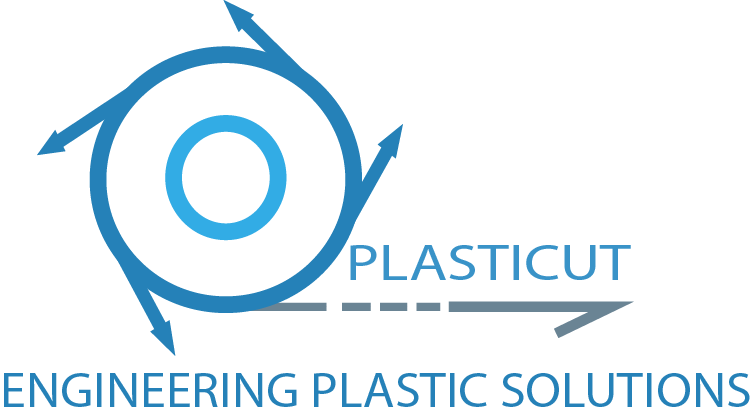The world of plastics is vast and diverse, with each type of plastic offering unique properties and applications. In this comprehensive guide, we’ll explore eight common plastics—PVC, ABS, ABS-PC, PMMA, PC, PA, POM, and PP—their applications, and the pros and cons associated with each. Let’s dive in!
-
PVC (Polyvinyl Chloride)
PVC is a versatile material used in a wide range of applications, including pipes, window frames, vinyl flooring, medical devices, and cable insulation.
Pros:
- Durability: PVC is resistant to weathering, chemical rotting, and abrasion.
- Versatility: This material can be moulded and shaped into various forms and sizes.
- Cost-effectiveness: PVC is affordable and easy to produce.
- Low maintenance: It does not require painting or sealing.
Cons:
- Environmental impact: PVC production and disposal can be harmful to the environment.
- Chemical additives: Some additives used in PVC manufacturing may pose health risks.
- Flammability: PVC can release toxic fumes when exposed to flames.
-
ABS (Acrylonitrile Butadiene Styrene)
ABS is commonly used in automotive parts, consumer electronics, and toys (e.g., LEGO bricks).
Pros:
- High impact resistance: ABS is known for its strength and durability.
- Easy to process: It can be easily moulded and machined.
- Aesthetics: It offers a smooth, glossy finish.
Cons:
- Not UV resistant: ABS can degrade when exposed to sunlight.
- Less eco-friendly: It’s not easily biodegradable.
-
ABS-PC (ABS-Polycarbonate Blend)
ABS-PC is used in applications requiring higher strength and heat resistance, such as automotive parts, power tool housings, and laptop cases.
Pros:
- Improved properties: The blend of ABS-PC offers higher strength, heat, and UV resistance than ABS alone.
- Processing: ABS-PC retains the ease of processing of ABS.
Cons:
- Cost: ABS-PC is generally more expensive than ABS.
- Environmental impact: Like ABS, ABS-PC is not easily biodegradable.
-
PMMA (Polymethyl Methacrylate), also known as Acrylic
PMMA is used in a variety of applications, including signage, displays, aquariums, and optical lenses.
Pros:
- Transparency: PMMA offers excellent light transmission and clarity.
- UV resistance: It’s resistant to UV light and maintains its transparency over time.
- Weather resistance: PMMA has strong resistance to weathering and aging.
Cons:
- Brittleness: PMMA is prone to cracking and breaking under stress.
- Flammability: It has higher flammability compared to other plastics.
-
PC (Polycarbonate)
PC is used in applications requiring high impact resistance and transparency, such as bulletproof glass, eyewear lenses, and automotive components.
Pros:
- High impact resistance: PC is incredibly strong and virtually unbreakable.
- Transparency: It offers excellent light transmission and clarity.
- Temperature resistance: PC can withstand a wide temperature range.
Cons:
- Sensitivity to chemicals: It’s prone to stress cracking when exposed to certain chemicals.
- Higher Cost: PC is generally more expensive than other plastics.
PA is used in various applications, including automotive parts, textiles, gears, and bearings.
Pros:
- High strength: PA offers excellent strength and durability.
- Wear resistance: It has low friction and high wear resistance, making it suitable for moving parts.
- Chemical resistance: It’s resistant to many oils, fuels, and chemicals.
Cons:
- Moisture absorption: PA can absorb moisture, which may affect its mechanical properties.
- Higher cost: It’s generally more expensive than other plastics.
-
POM (Polyoxymethylene), also known as Acetal or Delrin
POM is used in precision parts requiring low friction and high stiffness, such as gears, bearings, and bushings.
Pros:
- Low friction: POM has a low coefficient of friction, making it ideal for moving parts.
- Dimensional stability: It maintains its shape and dimensions under various conditions.
- High stiffness: POM offers excellent rigidity and strength.
Cons:
- Chemical sensitivity: POM can degrade when exposed to strong acids or bases.
- Flammability: It’s more flammable compared to other engineering plastics.
-
PP (Polypropylene)
PP is used in a wide range of applications, including packaging, automotive parts, textiles, and reusable containers.
Pros:
- Chemical resistance: PP is resistant to many chemicals, making it suitable for packaging and containers.
- Lightweight: It has a low density, making it ideal for lightweight applications.
- Low cost: PP is one of the most cost-effective plastics available.
Cons:
- Low strength: PP has lower strength compared to other engineering plastics.
- UV sensitivity: It can degrade when exposed to UV light, which can be mitigated with additives.
Making an Informed Decision
Each plastic material comes with its unique set of properties, applications, advantages, and disadvantages. Understanding these differences is crucial when selecting the right plastic for your project. By considering factors such as durability, cost, aesthetics, and environmental impact, you can make informed decisions and choose the best plastic for your specific needs.
If you need help selecting the right plastic for your next project – Contact us today!
